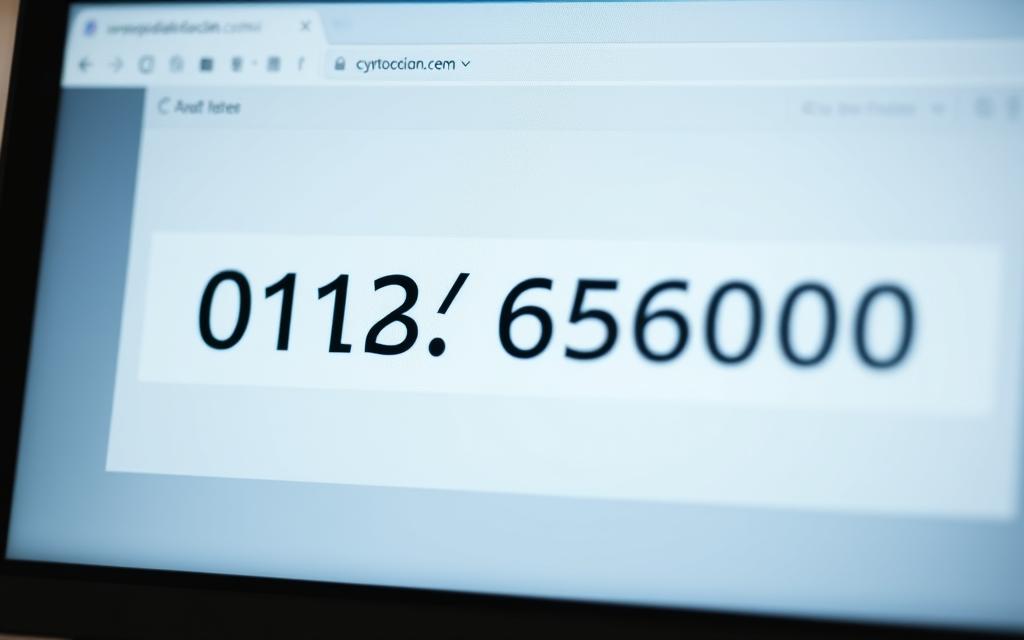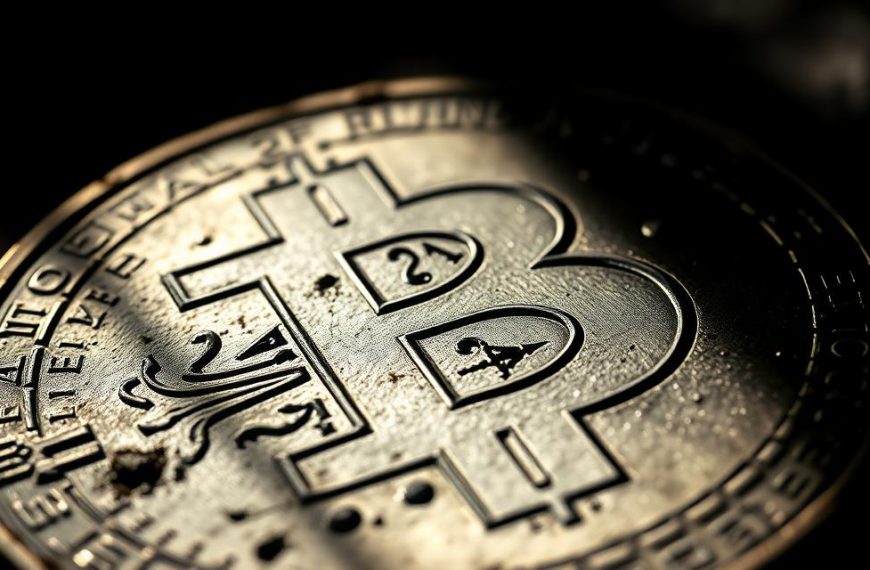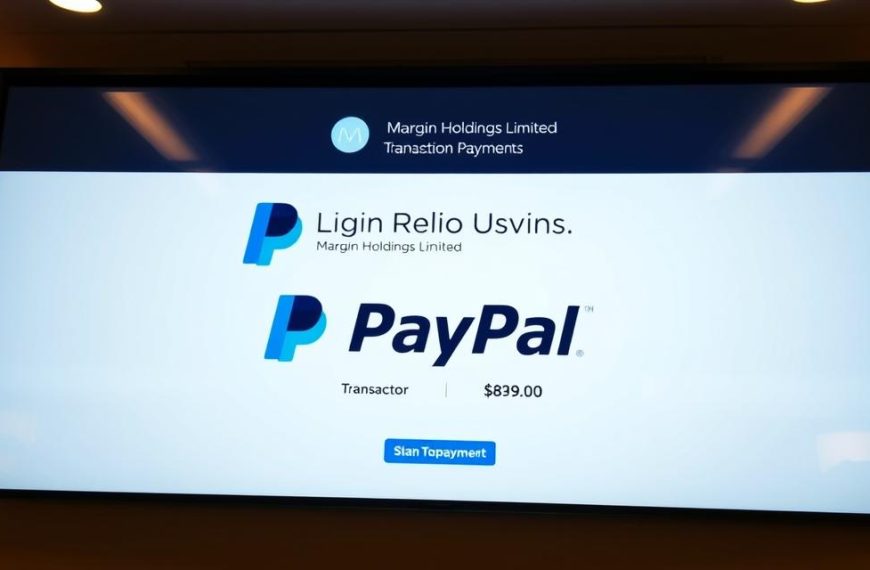Transferring crypto assets between platforms is a common practice among traders and investors. Consolidating your coins into one account can simplify tracking your portfolio and enable commission-free trading.
When moving your crypto from Voyager to Robinhood, it’s crucial to understand the process and potential limitations. Ensuring you have the correct address and network is vital to avoid any loss of funds.
This guide will walk you through the step-by-step process of transferring your crypto assets safely and efficiently, minimising fees and transfer times.
Understanding Crypto Transfers Between Platforms
Crypto transfers between platforms are not just about moving assets; they involve understanding the type of wallets you’re using. When transferring crypto from Voyager to Robinhood, it’s crucial to comprehend the basics of cryptocurrency transfers and the differences between custodial and non-custodial wallets.
The Basics of Cryptocurrency Transfers
Cryptocurrency transfers involve moving digital assets from one wallet to another. This process is facilitated by blockchain technology, which ensures secure and transparent transactions. Understanding the basics of how cryptocurrency transfers work is essential for a smooth transfer process.
Differences Between Custodial and Non-Custodial Wallets
The type of wallet you use significantly affects how you manage your crypto assets. Custodial wallets, such as those offered by Robinhood Crypto, manage your private keys on your behalf, providing convenience but requiring trust in the platform’s security measures. In contrast, non-custodial wallets give users complete control over their private keys, offering greater security autonomy but also placing full responsibility for key management on the user.
Understanding the distinction between these wallet types is crucial as it affects the transfer process, security considerations, and recovery options. The following table summarises the key differences:
| Wallet Type | Key Management | Security Responsibility |
|---|---|---|
| Custodial | Platform manages private keys | Platform is responsible |
| Non-Custodial | User manages private keys | User is responsible |
When transferring between custodial platforms like Voyager and Robinhood, you’re essentially requesting one service to send assets to another, rather than directly moving them yourself. This process requires careful attention to detail to ensure that the transfer is successful.
Overview of Voyager and Robinhood Crypto Services
To successfully transfer crypto from Voyager to Robinhood, it’s essential to comprehend the crypto services both platforms provide. This understanding will help users navigate the transfer process more efficiently.
Voyager Platform Features and Limitations
Voyager is known for its user-friendly interface and commission-free trading on a variety of cryptocurrencies. However, it’s crucial to check which cryptocurrencies are supported on both Voyager and Robinhood to ensure a smooth transfer. Voyager operates as a custodial service, maintaining control over the private keys associated with users’ cryptocurrency holdings.
Robinhood Crypto Capabilities
Robinhood Crypto offers commission-free trading on a select range of cryptocurrencies, making it an attractive destination for transferring assets. The platform supports direct deposits and withdrawals for numerous cryptocurrencies and implements robust security measures, including identity verification and two-factor authentication. Robinhood’s mobile-first approach provides a streamlined interface for managing crypto transfers.
| Platform | Commission-Free Trading | Security Measures |
|---|---|---|
| Voyager | Yes | Custodial Service |
| Robinhood Crypto | Yes | Identity Verification, 2FA |
By understanding the features and limitations of both Voyager and Robinhood Crypto, users can make informed decisions when transferring their cryptocurrency.
Prerequisites Before Transferring Crypto
Ensuring a seamless crypto transfer from Voyager to Robinhood requires fulfilling specific prerequisites. Before initiating the transfer, it’s essential to verify certain settings on both platforms to avoid potential issues.
Verifying Your Identity on Both Platforms
Firstly, ensure that your identity is verified on both Voyager and Robinhood. This step is crucial as it enables you to withdraw and deposit cryptocurrencies. Verification processes may vary between the two platforms, so it’s advisable to check their respective guidelines.
Enabling Two-Factor Authentication
Enable two-factor authentication (2FA) on both platforms to add an extra layer of security to your accounts. This feature significantly reduces the risk of unauthorized access to your accounts.
Checking Supported Cryptocurrencies and Networks
Not all cryptocurrencies are supported for transfer on Robinhood. It’s vital to check if the specific crypto you wish to transfer is supported and if the blockchain network used is compatible. Sending unsupported cryptocurrencies or using an incompatible network can result in the loss of funds. Always confirm the address format requirements for the transfer and ensure that the address is correctly generated on Robinhood before initiating the withdrawal from Voyager.
Before completing a transfer, review the list of supported cryptocurrencies and networks on Robinhood to avoid any potential loss. For a successful transfer, it’s also crucial to understand that some cryptocurrencies require additional information, such as destination tags or memos, to be included correctly.
Supported Cryptocurrencies for Transfer
Understanding the supported cryptocurrencies on both Voyager and Robinhood is key to a smooth transfer process. When moving your crypto assets, it’s essential to verify that the specific cryptocurrency you’re transferring is available on both platforms.
Cryptocurrencies Available on Both Platforms
Both Voyager and Robinhood support a variety of cryptocurrencies, including popular assets like Bitcoin (BTC), Ethereum (ETH), and various ERC-20 tokens. It’s crucial to check the list of supported assets on both platforms before initiating a transfer to ensure that your chosen cryptocurrency is compatible.
Network Compatibility Considerations
Network compatibility is a critical factor when transferring cryptocurrencies. Different cryptocurrencies operate on various blockchain networks, and not all networks are supported by both Voyager and Robinhood. For instance, Ethereum-based tokens (ERC-20) must be sent on the Ethereum network. Ensuring that the address and network match
- Verify that the cryptocurrency you’re transferring is supported on both the sending and receiving platforms.
- Confirm that the blockchain network you’re using is compatible with both Voyager and Robinhood.
By understanding these considerations, you can ensure a successful transfer of your crypto assets.
How to Transfer Crypto from Voyager to Robinhood
Transferring your cryptocurrency from Voyager to Robinhood can be accomplished by following a few straightforward steps. This process involves obtaining the correct deposit address on Robinhood, initiating the withdrawal on Voyager, and confirming the transaction.
Obtaining Your Robinhood Deposit Address
To start, you need to obtain your Robinhood deposit address. Navigate to the Robinhood app, select the cryptocurrency you wish to transfer, and tap on ‘Deposit’. Robinhood will generate a unique deposit address for the selected cryptocurrency. It’s crucial to copy this address accurately to ensure your funds are transferred correctly.
Initiating the Withdrawal from Voyager
Next, log in to your Voyager account and go to the ‘Withdraw’ section. Select the cryptocurrency you’re transferring and enter the Robinhood deposit address you obtained earlier. You’ll also need to specify the amount you wish to transfer. Voyager may display the network fees associated with the transaction, so be sure to review these before proceeding.
| Platform | Action | Details to Verify |
|---|---|---|
| Voyager | Withdrawal | Deposit Address, Amount, Network Fees |
| Robinhood | Deposit | Deposit Address, Cryptocurrency Type |
Confirming the Transaction
After entering the withdrawal details on Voyager, you’ll need to confirm the transaction. This typically involves additional security verification through two-factor authentication. Once confirmed, Voyager will process the withdrawal and broadcast the transaction to the relevant blockchain network. You can track the transaction’s progress using the unique transaction hash (TXID) provided.
Understanding Network Fees and Transfer Costs
Network fees play a crucial role in cryptocurrency transactions, including transfers between platforms like Voyager and Robinhood. These fees are associated with the processing of transactions on the blockchain network.
Voyager Withdrawal Fees
When withdrawing cryptocurrency from Voyager, users are subject to network fees, which can fluctuate based on the cryptocurrency being transferred and the current state of the network. It’s essential to check the estimated network fee before initiating a withdrawal.
Robinhood’s Fee Structure
Robinhood Crypto provides transparency regarding network fees for withdrawals. The platform estimates the network fee and adds it to the amount being sent. For instance, sending 100 DOGE with a network fee of 1 DOGE results in a total of 101 DOGE being sent. Notably, Robinhood does not charge additional platform fees for receiving cryptocurrency transfers.
| Platform | Network Fee Handling | Additional Fees |
|---|---|---|
| Voyager | Charges network fees for withdrawals | No additional platform fees mentioned |
| Robinhood Crypto | Estimates and adds network fees for withdrawals | No additional fees for receiving crypto |
Understanding these fee structures can help users make informed decisions when transferring their crypto assets between Voyager and Robinhood.
Transfer Timing and Confirmation Process
When transferring cryptocurrency from Voyager to Robinhood, understanding the transfer timing and confirmation process is crucial. The time it takes for a transfer to be completed depends on several factors, including the blockchain’s confirmation requirements and the network’s status.
Expected Processing Times
The actual processing times for crypto transfers can vary significantly from the estimated times due to factors like network congestion. Robinhood requires a certain number of confirmations on the blockchain before crediting the deposit to your account. The number of required confirmations is subject to change, so it’s essential to check the current requirements.
Blockchain Confirmations Explained
Blockchain confirmations represent the number of blocks added to the blockchain after the block containing your transaction. Each new block increases the security against potential reversals. Different cryptocurrencies have varying confirmation requirements based on their blockchain architecture and security models. For instance, Bitcoin averages 10 minutes per block, while Ethereum averages 12-15 seconds.
| Cryptocurrency | Average Block Time | Confirmations Required |
|---|---|---|
| Bitcoin | 10 minutes | 3-6 |
| Ethereum | 12-15 seconds | 12-20 |
During periods of network congestion, transactions with higher fees are prioritised, potentially delaying confirmations for transfers with standard fee rates. Understanding these dynamics is key to managing your expectations regarding transfer timing.
Security Best Practices During Transfers
To safeguard your assets, it’s crucial to follow best practices during crypto transfers. When moving cryptocurrency from Voyager to Robinhood, several precautions can help ensure a secure and successful transaction.
Double-Checking Wallet Addresses
It’s vital to verify the wallet address before initiating a transfer. A single incorrect character can result in the loss of your cryptocurrency. Always double-check that the address matches the one provided by Robinhood. This simple step can prevent costly errors.
Using Test Transactions First
Before transferring large amounts of cryptocurrency, consider sending a small test transaction. This practice helps confirm that the receiving address is correct and that Robinhood can properly credit the specific cryptocurrency. While test transactions incur additional network fees, the security assurance they provide is typically worth the cost.
By following these best practices, you can significantly reduce the risk associated with transferring cryptocurrency between platforms.
Common Transfer Errors and How to Resolve Them
When transferring cryptocurrency, several common errors might arise, but being aware of them can simplify the process. Understanding these issues can help ensure a smooth transfer of your crypto assets from Voyager to Robinhood.
Address Format Issues
Incorrect address formats are a common issue. Ensure that the deposit address on Robinhood is correctly formatted and matches the type of cryptocurrency you’re transferring. For instance, Bitcoin (BTC) and Bitcoin Cash (BCH) have different address formats.
Network Mismatch Problems
A network mismatch occurs when the cryptocurrency network used for the transfer doesn’t match the one supported by the receiving platform. Verify that both Voyager and Robinhood support the same network for the cryptocurrency you’re transferring.
Insufficient Funds for Network Fees
Insufficient funds for network fees can cause transfer failures. When withdrawing from Voyager, ensure you have enough cryptocurrency to cover both the transfer amount and the network fee. For example, for ERC-20 tokens, you need ETH for gas fees.
- Check your balance to cover the transfer amount and fees.
- Be aware that network fees can fluctuate, especially during high congestion periods.
- Robinhood’s “Send All” function automatically deducts network fees, but Voyager requires separate fee coverage.
Transfer Limits and Restrictions
When transferring cryptocurrency from Voyager to Robinhood, it’s essential to understand the transfer limits and restrictions imposed by both platforms. These limits can significantly impact your ability to move your assets smoothly.
Voyager Withdrawal Limits
Voyager has its own set of withdrawal limits that users must adhere to when transferring cryptocurrency to another platform like Robinhood. These limits can vary based on the type of cryptocurrency being transferred and the user’s account status. It’s crucial to check your account settings on Voyager to understand the specific limits that apply to your account.
Robinhood Deposit Limitations
Robinhood, on the other hand, does not impose limits on the amount of cryptocurrency you can deposit into your account, making it an attractive option for transferring large holdings from Voyager. However, Robinhood does implement withdrawal limits that vary based on factors such as your account verification level and transaction history. The following table summarises key points about Robinhood’s deposit and withdrawal policies:
| Transaction Type | Limitations |
|---|---|
| Deposit | No limits on cryptocurrency deposits |
| Withdrawal | Limits vary based on account verification level and transaction history |
It’s also worth noting that while deposits are unlimited, certain cryptocurrencies may have minimum deposit requirements. Understanding these nuances is key to managing your cryptocurrency transactions effectively.
Using Robinhood’s Block Explorer to Track Transfers
With Robinhood’s Block Explorer, you can easily monitor the status of your crypto transfers from Voyager. This tool provides real-time updates on transaction confirmations, giving you peace of mind during the transfer process.
How to Read Transaction Details
When examining your transaction hash, focus on key details such as the number of confirmations, the recipients, and the sender. The number of confirmations is a crucial indicator of how long it will take for your transaction to be finalized.
Verifying Transaction Status
To verify your transaction status, locate the transaction using the TXID provided by Voyager. The status will progress from “Pending” or “Unconfirmed” to “Confirmed” as it receives blockchain confirmations. Robinhood requires a specific number of confirmations before crediting funds to your account, varying by cryptocurrency.
| Cryptocurrency | Required Confirmations |
|---|---|
| Bitcoin | 6 |
| Ethereum | 30 |
Alternative Transfer Methods
When transferring crypto assets from Voyager to Robinhood, users have the option to utilise alternative transfer methods to suit their specific needs. These methods can provide greater flexibility and potentially reduce costs associated with the transfer.
Using an Intermediate Wallet
One alternative method involves using an intermediate wallet to temporarily hold the crypto assets during the transfer process. This can be particularly useful if there are issues with direct transfers between Voyager and Robinhood. By using an intermediate wallet, users can potentially avoid some of the limitations and fees associated with direct transfers.
Converting to a Different Cryptocurrency First
Another approach is to convert the crypto assets to a different cryptocurrency before transferring them to Robinhood. For instance, if Bitcoin has high transfer fees, converting it to Litecoin or Stellar (XLM) can significantly reduce fees and processing times. After the transfer, users can then convert the assets back to their desired cryptocurrency on Robinhood. However, it’s crucial to consider the trading fees for both conversions and potential price fluctuations during the transfer process.
| Cryptocurrency | Transfer Fee | Processing Time |
|---|---|---|
| Bitcoin (BTC) | High | Long |
| Litecoin (LTC) | Low | Fast |
| Stellar (XLM) | Low | Fast |
Special Considerations for ERC-20 Tokens
When transferring ERC-20 tokens from Voyager to Robinhood, several factors must be considered to ensure a smooth transaction. ERC-20 tokens are cryptocurrencies built on the Ethereum network, and their transfer involves understanding specific requirements and potential limitations.
Understanding Gas Fees
One crucial aspect of transferring ERC-20 tokens is gas fees. Gas fees are the costs associated with transactions on the Ethereum network, paid in Ether (ETH). The complexity of a transaction and the network congestion determine the gas fee. It’s essential to have sufficient ETH in your wallet to cover these fees when transferring ERC-20 tokens.
Token-Specific Requirements
Different ERC-20 tokens may have specific requirements or limitations. Some tokens implement transfer fees or “tax” mechanisms within their smart contracts, resulting in receiving less than the sent amount. Additionally, certain tokens may require specific interaction with their smart contracts before transfers, which might not be supported by all platforms. Always verify that the specific token you wish to transfer is supported by Robinhood before initiating a withdrawal from Voyager to avoid potential loss.
What to Do If Your Transfer Is Delayed
If your crypto transfer from Voyager to Robinhood is delayed, it’s essential to understand the possible causes and the appropriate course of action. Delays can occur due to various factors, including network congestion or incorrect transaction details.
Normal Delay Timeframes
Crypto transactions typically take a certain amount of time to process. The expected processing time can vary depending on the cryptocurrency and network conditions. Generally, transactions are confirmed within a few minutes to an hour, but during periods of high congestion, it can take longer.
When to Contact Customer Support
If your transfer has not been credited after receiving the required number of blockchain confirmations and waiting at least 24 hours, it’s time to contact customer support. You should also reach out if your transaction shows as “Completed” on the blockchain explorer but hasn’t appeared in your Robinhood account. Before contacting support, ensure you have the transaction hash (TXID), sending address, receiving address, and exact amount transferred ready. This information will help support teams locate your transaction and provide assistance.
Legal and Tax Implications of Crypto Transfers
When transferring crypto from Voyager to Robinhood, it’s essential to consider the legal and tax implications. This process involves understanding the regulatory requirements and potential tax consequences of such transactions.
Record-Keeping Requirements
Maintaining accurate records of your crypto transactions is vital for tax purposes. Ensure you document the date, amount, and type of crypto transferred, as well as any associated fees. Some jurisdictions have specific reporting requirements for transfers between platforms, particularly for amounts above certain thresholds.
Potential Tax Considerations
While direct transfers of the same cryptocurrency between platforms typically aren’t taxable events, converting between different cryptocurrencies before transferring would constitute a taxable disposal in most jurisdictions. Network fees paid for transfers may be tax-deductible in some jurisdictions as a cost of managing investments. It’s crucial to consult with a tax professional familiar with cryptocurrency regulations in your jurisdiction to ensure compliance with all applicable tax laws regarding transfers.
Conclusion
Successfully moving your digital assets between platforms demands a thorough understanding of the process. To transfer crypto from Voyager to your Robinhood crypto account, follow the outlined steps, ensuring you use the correct addresses and follow security best practices. Understanding crypto transfer specifics helps minimise risks. By doing so, you can optimise your crypto transfer experience and get back to managing your assets on Robinhood.
















